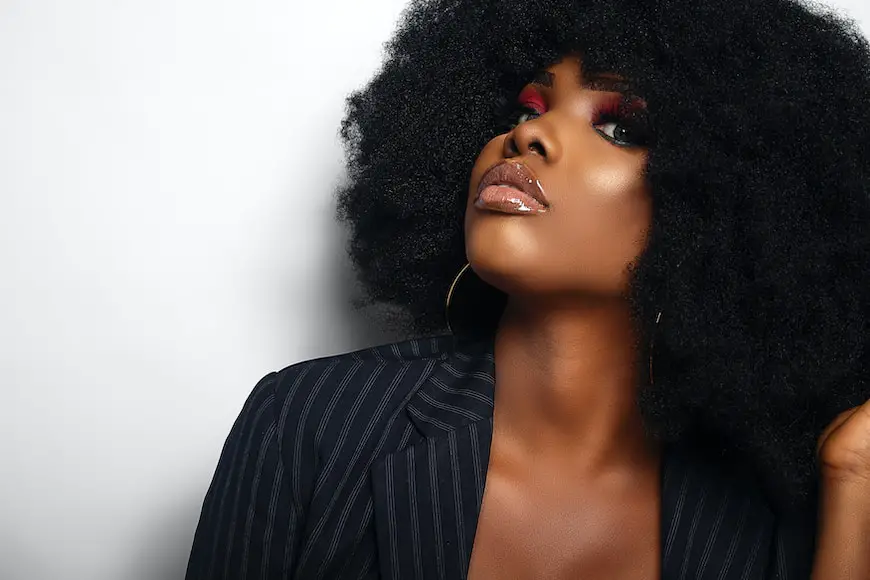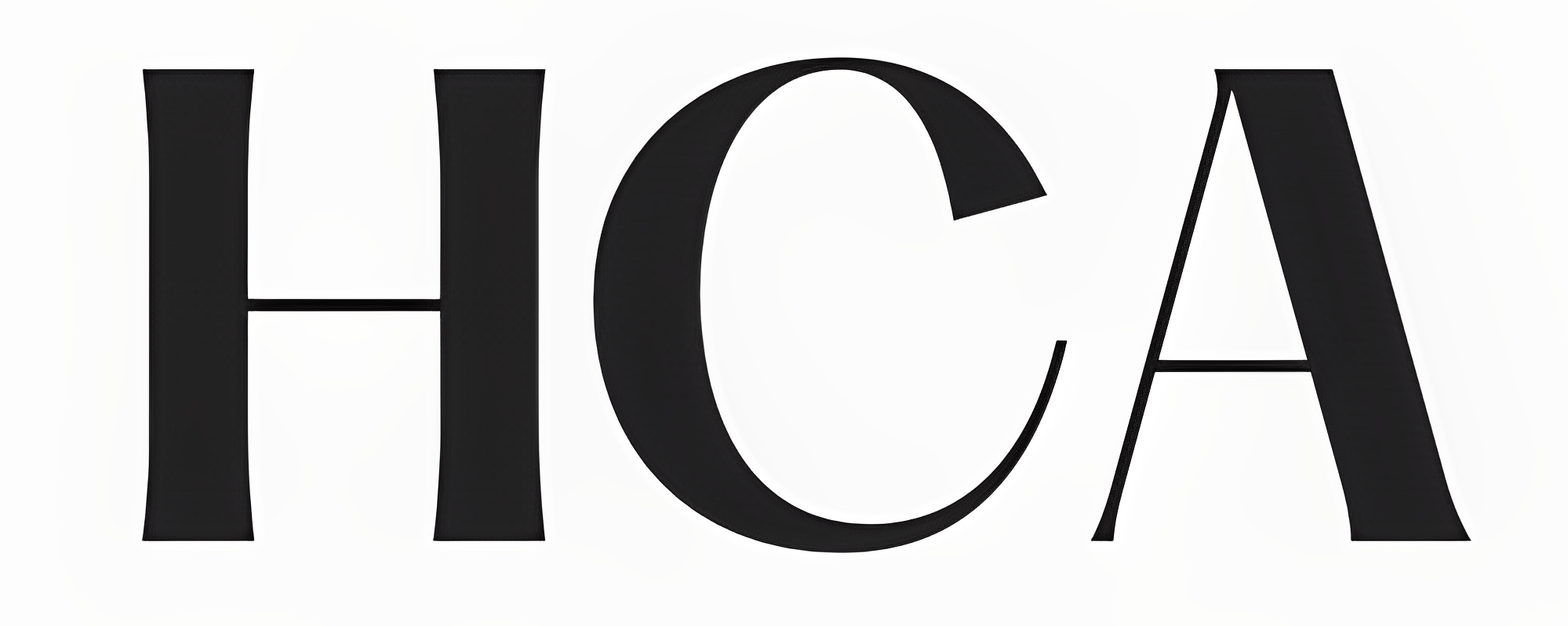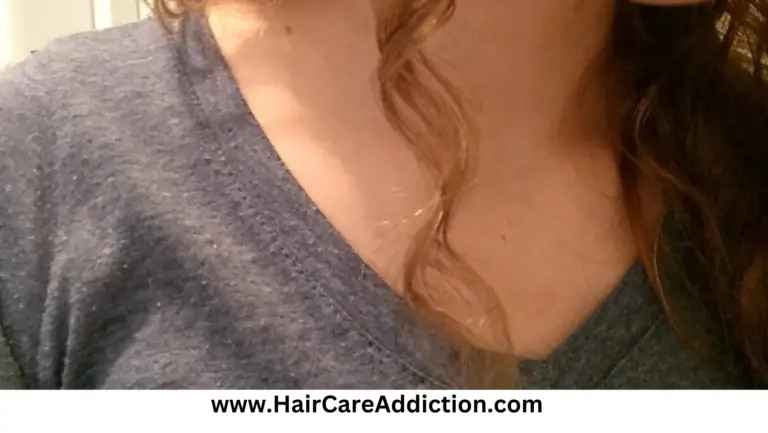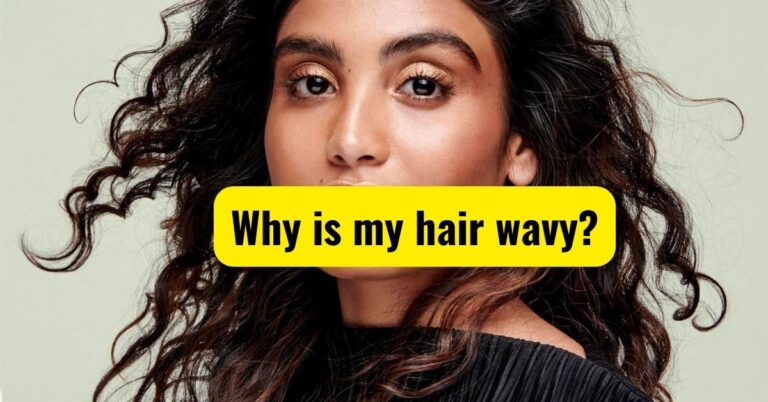Why Does 4c Hair Grow Upwards: The Surprising Science Behind

If you have 4C hair, you may have noticed that it never lies completely flat, defy gravity, and always tends to grow upwards instead of down.
This can be frustrating, especially if you’re looking for ways to achieve a smoother, sleeker look.
But why does 4C hair grow upwards, and can you do anything to fix it?
In this article, you’ll find the science behind 4C hair growth patterns and offer tips for managing and styling them.
What is 4C Hair?

To understand why 4C hair grows upwards, we first have to know what 4c hair is and what its characteristics are.
In the hair typing system developed by Andre Walker also known as Hair Chart, 4C hair is hair that is like densely-packed coils that form the shape of the letter “Z.”
4c hair is often described as “kinky” or “coily,” and has a tendency to be dry, fragile, and prone to breakage.
Characteristics of 4C Hair
- Tight and densely packed coils
- Create a zig-zag pattern
- Not any defined curl pattern
- Fine texture and delicate
- Tendency to shrink up to 75% of its actual length
- very fragile and prone to breakage
- More susceptible to tangling and matting
- Tends to grow in multiple directions, creating a voluminous, fluffy look
Why Does 4C Hair Grow Upwards?
Now, you know about the 4c hair and its characteristics, you’ll know easily understand the reason behind it always growing upward.
The reason why 4c hair grows upwards is due to the shape of the hair follicle, which is part of the skin from which the hair grows.
The hair follicle is oval, in people with curly or wavy hair, which causes the hair to grow in a curved or S-shaped pattern.
Similarly, in people with straight hair, the hair follicle is round, which causes the hair to grow straight.
But, in people with 4c hair, the hair follicle is flat and twisted.
This unique shape of the hair follicle causes the hair to grow upwards instead of downwards.
How to make curly hair like 4c grow down instead of up?
Hair like 4c hair is naturally voluminous and has a tendency to grow upwards, and you can do nothing to change the way it grows. Instead, you can tame it and makes it come downward with these haircare routines:
Hair Care for 4C Hair
If you have 4C hair, you may find it challenging to care for your hair. 4C hair is delicate, and it requires special care to keep it healthy and beautiful.
One of the most important steps in caring for 4C hair is washing it correctly.
Before washing your hair, it’s recommended to apply a pre-poo treatment to protect it from the drying effects of shampoo.
When washing your hair, it’s best to use a sulfate-free shampoo to prevent your hair from becoming dry and brittle.
After shampooing, use a moisturizing conditioner to hydrate your hair, and detangle it with a wide-toothed comb.
To maintain the health of your 4C hair, it’s important to deep condition it once a week to hydrate and strengthen it.
In addition to deep conditioning, you should also moisturize your hair daily with a leave-in conditioner or moisturizer.
Protective styles like braids, twists, and buns can help prevent breakage and damage.
Heat styling tools should be used sparingly or avoided altogether, and you should trim your ends every 8-12 weeks to prevent split ends and breakage.
To maintain the overall health of your hair, you should drink plenty of water and eat a healthy diet.
Sleeping on a satin pillowcase can help prevent breakage and keep your hair hydrated.
At night, it’s recommended to wear a satin bonnet or wrap your hair in a satin scarf to protect it from friction and breakage.
Finally, avoid manipulating your hair too much or styling it too frequently, as this can cause damage and breakage.
In conclusion, taking care of 4C hair requires time and effort, but it’s well worth it to keep your hair healthy and beautiful.
By following these best practices for washing, styling, and maintaining 4C hair, you can enjoy beautiful and healthy hair for years to come.
Japanese Hair Straightening, also known as Liscio thermal reconditioning, is a popular hair treatment that promises to transform curly, frizzy hair into silky, straight locks.
But is it suitable for black hair?
What is Japanese Hair straightening
Japanese Hair Straightening is a thermal reconditioning process that involves using chemicals and heat to break down the bonds in the hair’s protein structure, resulting in permanently straight hair.
The process typically involves applying a solution containing chemicals, such as sodium hydroxide, to the hair, followed by heat activation using a flat iron.
The result is smooth, straight, and shiny hair that requires minimal styling effort.
Japanese Hair Straightening for Black Hair (Benefits and Result)
For those with black hair or an ethnic hair type, Japanese Hair Straightening can offer several benefits:
- Permanent straightening: Unlike temporary straightening methods that require frequent touch-ups, Japanese Hair Straightening provides a permanent solution to curly, frizzy hair.
- Reduced styling time: With permanently straightened hair, daily styling becomes easier and less time-consuming.
- Increased manageability: Straightened hair is typically more manageable, making it easier to style and care for.
However, it’s essential to consider the potential risks and downsides of Japanese Hair Straightening for black hair.
The treatment may not be suitable for all hair types, and the use of harsh chemicals can cause damage to already fragile or damaged hair.
How long does Japanese hair straightening last in black hair
Japanese Hair Straightening is a permanent hair treatment, meaning the results can last until the hair grows out.
For most people, this can range from six months to a year, depending on the individual’s hair growth rate. Regular touch-ups may be required to maintain the straightened look as new hair grows.
Does Japanese hair straightening damage hair
Japanese Hair Straightening can cause damage to the hair, particularly for those with black hair or an ethnic hair type that is more prone to breakage and dryness.
The chemicals used in the process can weaken the hair’s protein structure, leading to heat damage, brittleness, and breakage.
It is crucial to consult with a professional hairstylist to assess your hair’s condition and suitability for the treatment.
Can you permanently straighten black hair
Yes, you can permanently straighten black hair using methods like Japanese Hair Straightening or chemical relaxers.
However, permanent straightening treatments come with the risk of hair damage and should only be performed by experienced professionals.
Best way to straighten black hair
The best way to straighten black hair depends on the individual’s hair type, condition, and personal preferences. Some popular options include:
- Japanese Hair Straightening: A permanent solution for straightening curly, frizzy hair.
- Keratin treatments: A semi-permanent option that infuses hair with keratin proteins to reduce frizz and add shine.
- At-home heat styling: Using flat irons or blow dryers to temporarily straighten hair. This method requires frequent touch-ups and can cause heat damage if not done correctly.
Keratin or Japanese straightening: Which one is better
The choice between Keratin treatments and Japanese Hair Straightening depends on your hair type, condition, and personal preferences.
Keratin treatments are a semi-permanent option that can help reduce frizz and add shine, while Japanese Hair Straightening provides permanent straightening results.
However, Japanese Hair Straightening may cause more damage due to the chemicals and heat involved in the process.
For those with fragile or damaged hair, a Keratin treatment may be a safer and more suitable option.
Side effects of Japanese hair straightening
There are potential side effects associated with Japanese Hair Straightening, particularly for those with black hair or an ethnic hair type. Some of these side effects include:
- Hair damage: The chemicals used in the process can weaken the hair’s protein structure, leading to heat damage, brittleness, and breakage.
- Scalp irritation: Some individuals may experience scalp irritation or allergic reactions to the chemicals used in the treatment.
- Hair loss: In extreme cases, the treatment can cause hair loss due to excessive damage and breakage.
- Uneven hair growth: As the hair grows out, the new growth will retain its natural texture, which can result in an uneven appearance.
To minimize the risk of side effects, it’s crucial to consult with a professional hairstylist experienced in Japanese Hair Straightening and to follow proper aftercare guidelines to maintain the health of your hair.
Conclusion
In summary, 4c hair grows upwards due to the oval shape of the hair follicle, which causes the hair to grow in a curved or S-shaped pattern. This shape of the follicle is responsible for the curly or wavy texture of the hair.


